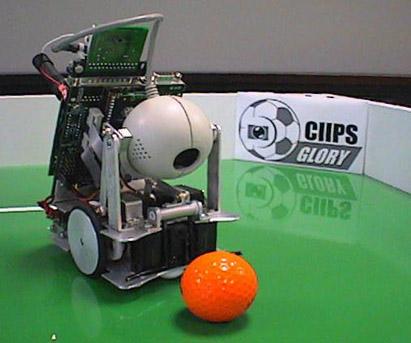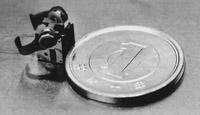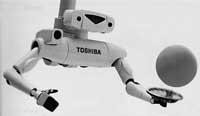Technology looking at insects... fiction
2001/02/18 Mendiburu, Joana - Elhuyar Zientziaren Komunikazioa
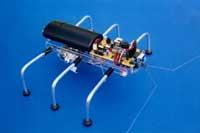
Robots are known and widely used in everyday life for a long time. They are used in the kitchen of the house to perform repetitive movements in companies, repair space stations or, so far, without going further. However, all these robots, despite their great comfort, still have a great dependence and limitations, especially because they can not move on their own. On the other hand, work at the molecular level is increasing, but there has not yet been a robot of this size. The ideas are there and it can be said that robotics will have two major changes, one referring to the autonomy of the robot and the other to smallness.
Get to look at insects and...
It often takes more time to think about new ideas than to carry out the project, but never forget that the shortest and most suitable way to have good ideas is to look at the environment. In this case, to design new robots, researchers have been inspired by the observation of these "social insects". The creators of micro-robots have detected two models that they want to imitate in these insects: one their size and another their group behavior. They study behavioral models observing in groups ants, bees or termites. In fact, individual observation of these insects does not learn much, but they are of great group strength.

Michael Dickinson, a researcher at the University of Berkeley, aims to create a fly robot. The creation of many of these robot flies and the strengthening of communication between them dreams of using them to explore the space. It is not yet close to the target, but well, at least it has designed the first fly robot.
Two other researchers from the University of Todai, for their part, have had a much smaller idea, but at the same time very useful. Its intention is to develop robots capable of flying and detecting chemical and radioactive contamination. These robots, which can withstand up to twenty times more radioactive pollution than humans, have been designed to work as safety agents by introducing them into the tubes of nuclear power plants.
In the United States the idea is similar, but not to control nuclear power plants, banks, museums, administration buildings, etc. to take care of it. Surely they were not looking at social insects, but good. Researcher Hed Heller has designed an insect robot that will detect and transmit chemical contamination and human movements.
Robots in blood
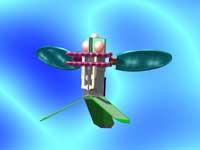
Inventing insect robots with great autonomy is not the only change that has occurred in robotics. And there is also intention to make robots smaller and smaller, since curiosity for smallness has jumped to the "nano". According to experts, the XXI. The 20th century, with nanotechnology, will witness a new scientific revolution. Research is carried out at the molecular level and, of course, it is necessary to adapt the material used. So, microrobots have been created that will circulate through the arteries through the body.
At the moment there are only a few microrobots, but soon they will become essential for telecommunications, surgery, optical systems, watchmaking... For this reason, although they have just begun to materialize the idea, it is considered that this is a technique that will develop in a very short term.
Some of the micro-robot models have been made at the Swedish University of Linköpings. They are 0.6 mm long by 0.3 mm wide and work with a precision of a tenth of a millimeter! They perform the movements with total freedom, with elbow, wrist, hand and between two and four fingers. They also have the ability to move in blood and urine. In view of this, researchers say that they will have great medical use and that, among other things, they will be able to extract living cells from the blood without deteriorating them to investigate in laboratories.
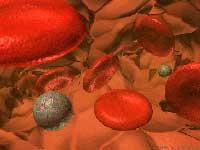
For his part, researcher Montegno of Cornell University in New York is designing a micro-helicopter that will be more than just a robot with joints. It has a nickel body and is able to walk through the arteries of man using a chemical as fuel. This helicopter would move the drugs into the cell. Following the same principle, the University of Utah, for its part, is thinking of releasing the arteries and making a helicopter that cures tumors.
Although it still seems fiction, from now on if you notice something that tickles you, do not worry, it will only be a microrobot.
Published in 7K

Gai honi buruzko eduki gehiago
Elhuyarrek garatutako teknologia



